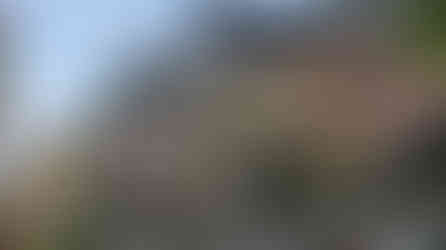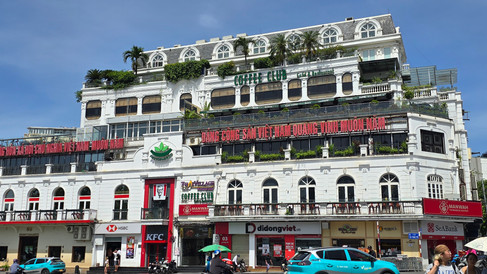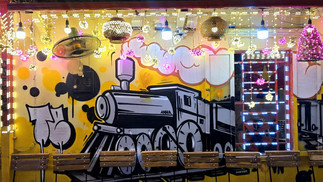Hà Nội Old Quarter - Streets from the Past
- shan157
- Jul 11
- 5 min read
Hà Nội Old Quarter is a dense labyrinthine relic of Vietnam’s soul, a place where tangled alleys and ancient rooftops hold the weight of over a thousand years of conflict, commerce and culture. Known locally as “Phố Cổ Hà Nội,” this historic enclave traces its roots to the 11th century, when Emperor Lý Thái Tổ relocated the capital of the Đại Việt kingdom to Thăng Long, the “Rising Dragon.” Since then, the Old Quarter has survived Mongol invasions, French colonial occupation, American bombing raids and the relentless push of modern development. Yet its spirit endures in the scent of incense from ancestral altars, the clang of street vendors’ tin carts and the flicker of lanterns.

Originally developed as a cluster of 36 guild streets, each dedicated to a specific craft or trade, the Old Quarter once echoed with the scrape of cobblers and the scent of herbs steeped by traditional medicine makers. These original streets (though there are more than 70 now) still carry names starting with “Hàng,” meaning “merchandise” or “store,” followed by the name of the item sold, such as Hàng Bạc (Silver Street) and Hàng Đào (Silk Street). This organic, chaotic layout defies the orderliness of colonial or modern city planning. It grew out of need, belief and commerce, making it not only one of the oldest continuously inhabited areas in Vietnam but also a living museum of Hà Nội’s commercial soul.
Geographically, the Old Quarter occupies a flat, river-bound stretch of land between the Red River to the east and Hoàn Kiếm Lake to the south. It was once crisscrossed with small canals that served both as transportation routes and spiritual conduits, believed to keep the city’s energy in balance according to Feng Shui principles. This sacred geography is an intricate dance between the physical and the metaphysical, where the layout of the land, the positioning of temples and the natural elements interact to maintain harmony and balance, both for the city and its inhabitants. In this context, the Red River to the north and Hoàn Kiếm Lake to the south represent the “dragon” and “tiger” respectively, key symbols in Feng Shui that represent strength and protection. Hà Nội’s geography emphasizes balance, the river’s flow provides a source of life and wealth, while the lake, known for its legend of the Golden Turtle God, offers a protective barrier, warding off bad energy.

Though most canals have since been paved over, Hanoi’s sacred geography is most apparent in the many temples, shrines and pagodas scattered throughout the Old Quarter. These spaces are not just religious sites but also are strategically located to harmonize with the flow of spiritual energy. One of the oldest and most significant sites in Hanoi is Bạch Mã Temple (White Horse Temple). Built during the 9th century, it is dedicated to a white horse that guided the Emperor to choose Thăng Long as the capital of the Đại Việt kingdom. The temple’s location at the intersection of several ancient trade routes makes it a potent point of spiritual energy, acting as a guardian of the city’s prosperity. The architecture and layout of the temple reflect the principles of Feng Shui, with its sweeping curved roofs and careful alignment designed to draw positive energy into the heart of the city.

Quan Thánh Temple and Trấn Quốc Pagoda are two other sacred landmarks in the Old Quarter, each tied to both spiritual and geographical significance. Quan Thánh, dedicated to the Taoist deity of war and protection, stands near the north gate of the city, symbolising the city's defense and stability. Trấn Quốc Pagoda, located on a small island in West Lake, is an important Buddhist site that also represents Hà Nội’s connection to the flow of water, a symbol of life, renewal and the eternal cycle.
Hoàn Kiếm Lake, the heart of Hanoi and a key focal point in the Old Quarter’s sacred geography, is more than just a beautiful body of water. According to local legend, it was here that Emperor Lê Lợi, during the 15th century, received a magical sword from the Golden Turtle God to help him fight against Chinese invaders. After the victory, he returned the sword to the lake, where it was swallowed by the turtle and it is said that the sword remains beneath its waters to this day.
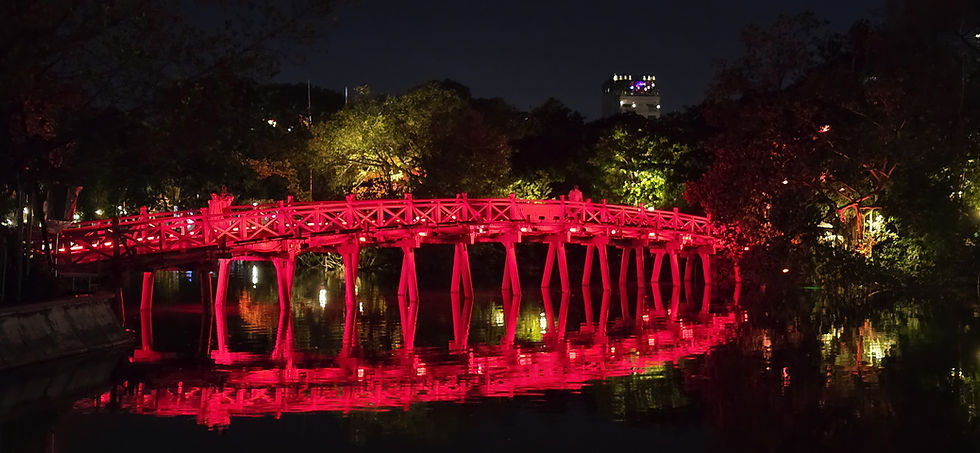
The lake’s spiritual significance is reflected in the layout of the Old Quarter around it. It is believed that the lake helps balance the city's energies, keeping the bustling streets in harmony. Many local residents visit the lake regularly to pay their respects to its protective powers, especially during traditional festivals like the Lunar New Year and the Mid-Autumn Festival. The lake’s Turtle Tower, standing like a sentinel in the middle of the water, is a prominent landmark and serves as a reminder of the connection between Hà Nội's urban life and the deep spiritual forces that guide it.

Through the centuries, the Old Quarter absorbed layers of influence from Chinese, French and indigenous Vietnamese cultures, creating a fusion of architecture that’s unlike anywhere else in Southeast Asia. The iconic tube houses evolved out of necessity and tradition. Originating in the 11th century, these homes were a response to a tax system that levied charges based on the width of a building’s façade, leading property owners to build long, narrow structures instead. Typically just 2 to 4 meters wide but extending deep into the block, tube houses often serve dual purposes, with commercial on the ground floor and residential above. Despite their small size, these homes are vertically layered, with steep stairs and rooms allocated for specific uses.

With its centuries of history and deep cultural layers, the city is rich in both tradition and dark folklore. Its old streets, temples and alleys are not just filled with tales of prosperity but also with eerie stories of hauntings, mysterious deaths and vengeful spirits. One of the most well-known legends is that of Hàng Mã Street. It is said that a woman was betrayed by her lover, who had promised to marry her but instead she took her life in a fit of rage. Her spirit, filled with sorrow and anger, is believed to wander the street at night, seeking revenge.

Other famous hauntings include the old house at 87 Mã Mây Street, which was the site of a tragic bombing during the First Indochina War and the haunted house by the Red River, where the restless spirit of a poisoned wife is believed to linger. Hoàn Kiếm Lake, with its deep ties to the tale of the magical sword and the giant turtle god, is also the site of many eerie encounters, with some claiming to be dragged under the water by unseen forces. The French Quarter and the Temple of Literature also have their share of ghostly legends, with spirits of workers and a vengeful scholars said to haunt the buildings.
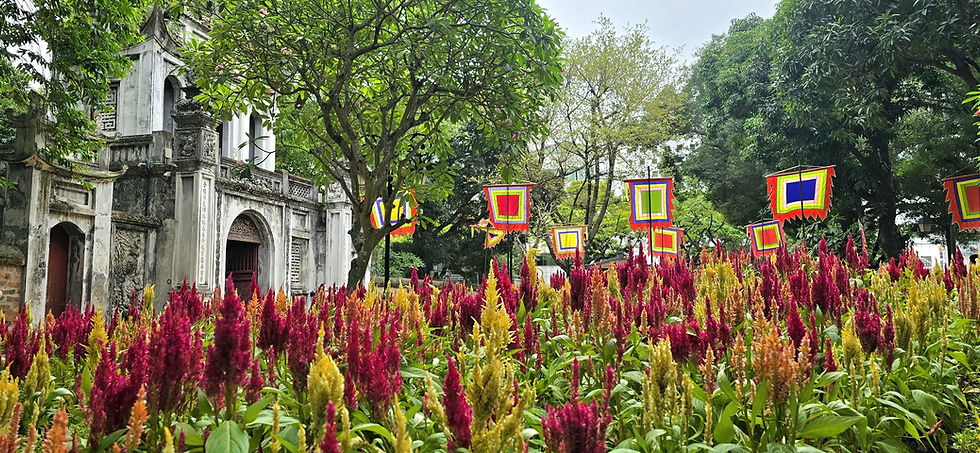
A living, breathing time capsule, Hà Nội Old Quarter is a tapestry woven from centuries of colonial exploitation, Confucian rituals, dynastic collapses and wartime destruction. Despite relentless modernisation and gentrification, the Old Quarter remains defiantly alive. It preserves not just Hà Nội’s heritage but the very essence of Vietnam’s ability to adapt and endure.
Location : Hoàn Kiếm District, Hà Nội Old Quarter, Vietnam
How to get there : To reach the Old Quarter from Noi Bai International Airport, travellers can choose from several options. A metered taxi from reputable companies like Mai Linh or Vinasun takes about 30–45 minutes and costs around 300,000–400,000 VND (approximately $13–$17 USD). For a more affordable route, the Bus No. 86 runs directly to the Old Quarter for just 30,000 VND (about $1.30 USD), taking roughly an hour. Ride-hailing apps like Grab are also popular and offer competitive rates, while private car transfers provide the most comfort, typically starting at 500,000 VND (around $22 USD).

Thanks for reading about Hà Nội Old Quarter - Streets from the Past. Check out more destinations here!

























